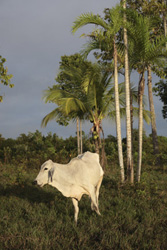Stepping up control of bovine babesiosis
Bovine babesiosis is a very serious disease that reduces cattle meat and milk yield in Latin America and Mediterranean countries. Its cause is a protozoan, Babesia that is spread by a tick vector. With EU funding, the project Medlabab aimed to control two of the most important strains, Babesia bovis (B. bovis) and B. bigemina. Medlabab devised a scientific schedule embracing many levels of parasite control. Primary objectives included efficient diagnosis of the disease, effective vaccination and reduction of other parasite carriers or reservoirs. %lSamples of bovine blood collected from babesiosis-endemic regions positive for the two strains were used to build a bank of DNA samples. The main objective was to study polymorphic antigens for candidate recombinant vaccines. Molecular markers were also isolated to identify strains. Four pathogenic and two attenuated or weakened strains were cultured in vitro for inoculation of calves. Medlabab scientists measured clinical features including increase in body temperature, occurrence of nervous symptoms and parasataemia, the parasite load in the blood. Reservoirs of parasites in other species including wildlife are an important factor in the drive to control a parasite. The project team found that equines and water buffaloes act as significant reservoir hosts and recommended that these animals should be included in control campaigns against babesiosis. Dissemination of information and networking between consortium members has been, and continues to be, an important feature of the research activity. Two Babesia world summits and a major conference, the Sixth International Conference on Ticks and Tick-borne Pathogens, have facilitated communication on Babesia research results. Medlabab researchers have provided valuable material for future testing of vaccines, molecular markers and diagnostic methods. Control of babesiosis is crucial, particularly for developing countries where economic losses caused by the disease can be devastating.







